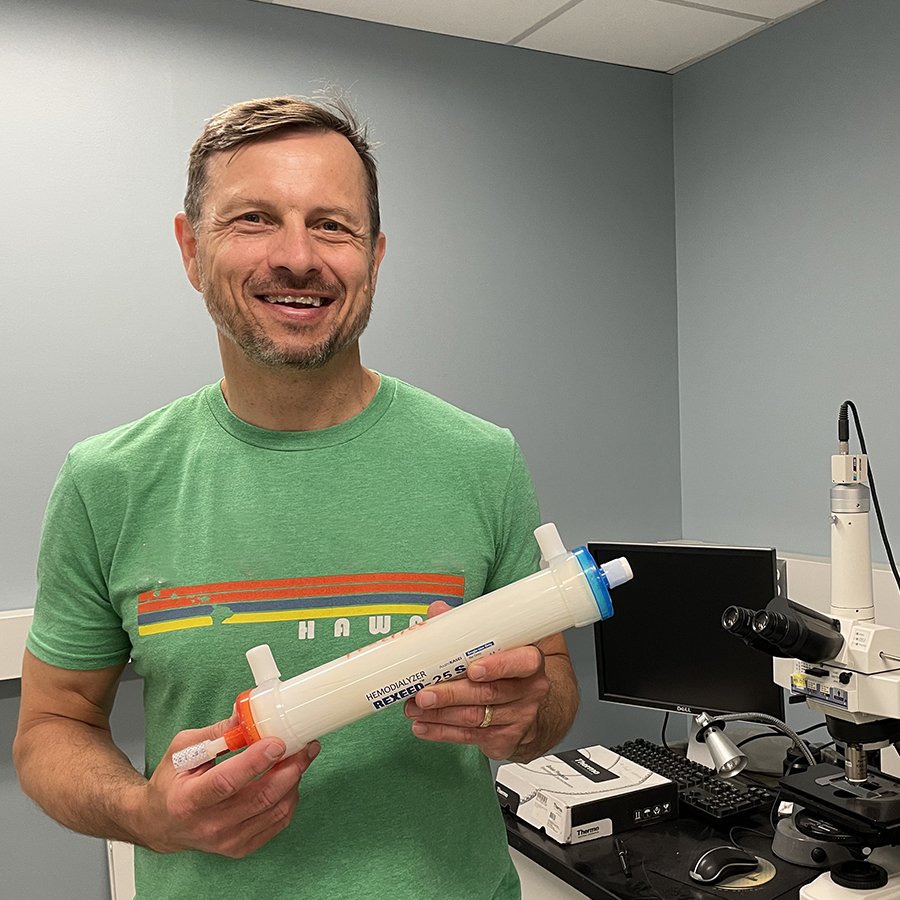Protecting Clean Water: Faculty awarded $2.1 million to study opportunistic pathogens and disinfection byproducts in US drinking water systems

The U.S. Environmental Protection Agency is investing $2.1 million in an innovative project to study microbial and chemical contaminants in water distribution systems. The project will be led by Raymond Hozalski (Principal Investigator), along with his co-PIs, Srijan Aggarwal, University of Alaska-Fairbanks; Timothy LaPara, UMN; Carsten Prasse of Johns Hopkins University and John Sivey of Towson University.
Pathogens (i.e., microorganisms that can make people sick) and disinfection byproducts (DBPs; potentially toxic chemicals formed when disinfectants like chlorine are added to water) are two classes of contaminants that are of concern in public water systems. Hozalski et al., will examine opportunistic pathogens or OPs and contaminants that occur as byproducts of disinfection processes introduced to control OPs and other pathogens. OPs are microbes that normally do not infect healthy people but can lead to severe and even fatal infections for immunocompromised people. Incidence of infections by OPs, like the bacterium Legionella pneumophila, are on the rise in the U.S. and other developed countries. The researchers will explore the tradeoffs between controlling OPs and the risks of introducing chemical contaminants via disinfection. They have partnered with water utilities located throughout the U.S., including small systems in rural Alaska that are typically understudied.
Researchers will examine characteristics of each water system to determine how they affect the occurrence of opportunistic pathogens. Specifically, researchers will examine water quality within the system, treatments applied, and water age (the length of time water remains in the system, within pipes or tanks, for example). Researchers will also determine the occurrence of regulated and unregulated byproducts resulting from disinfection, as well as any previously unidentified byproducts. After identifying OPs and DBPs, the researchers will examine tradeoffs and risks of various treatment and disinfection processes.
The researchers have developed an innovative approach. They will collect bacteria from large volumes of water (500-5,000 liters) for DNA-based analyses using a dead-end hollow-fiber ultrafiltration (UF) system. From these samples, the researchers will extract the DNA and quantify the OPs present via digital polymerase chain reaction. They will quantify both regulated and unregulated DBPs from parallel water samples, and they will assay for unknown DBPs using non-target analysis approaches. The presence and identity of toxic DBPs will be assessed using novel reactivity-directed analysis. Once the bacteria and byproducts in the systems have been identified and quantified, the researchers will seek to identify aspects that minimize the occurrence of OPs and DBPs. Finally, data analytics and modeling will be used to assess tradeoffs of various treatment and disinfection strategies. Researchers will enlist the help of an advisory board when developing recommendations and formulating guidance documents.
Researchers expect the project will generate new information on the occurrence of OPs and DBPs within U.S. water distribution systems and new approaches to protecting our access to clean water.